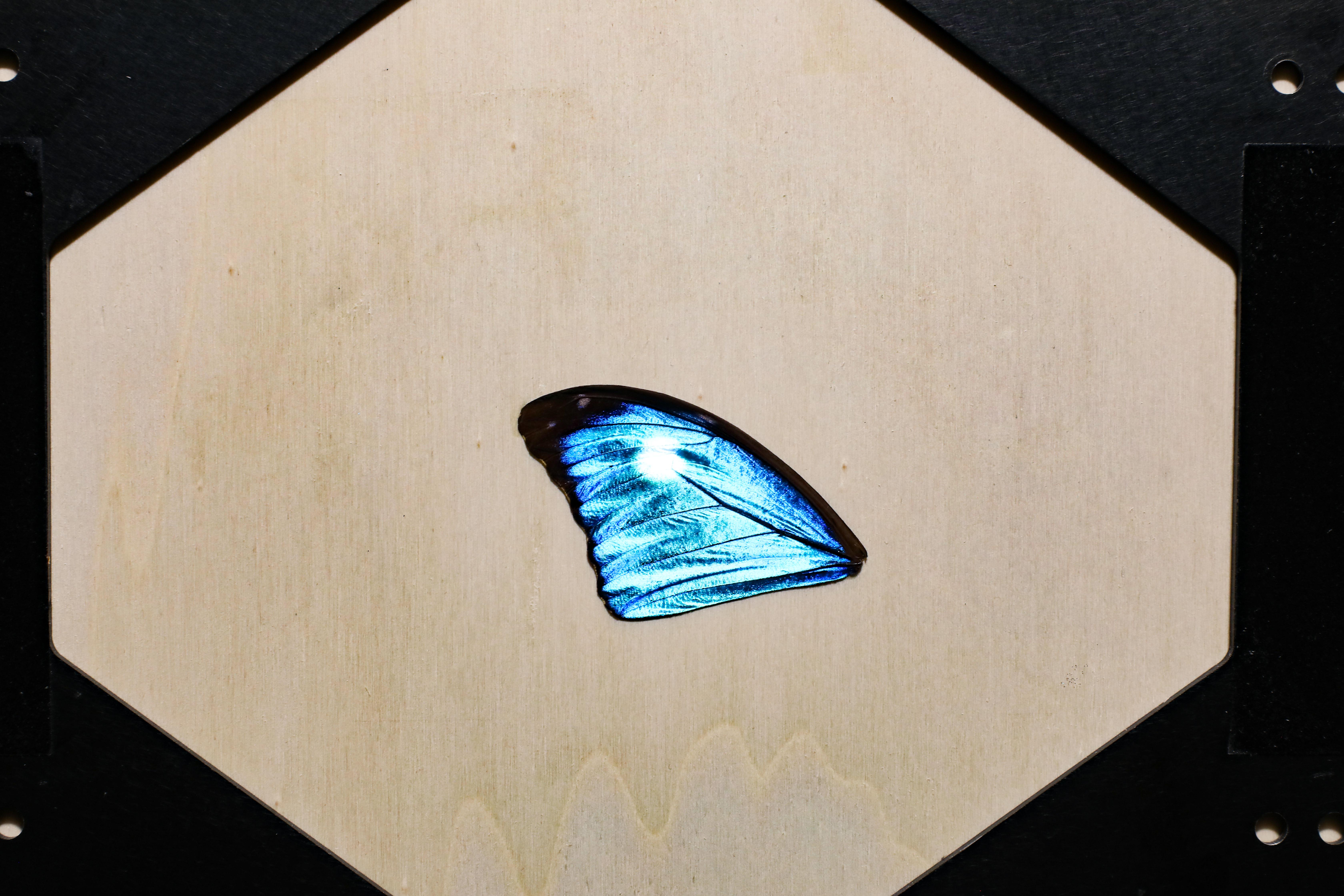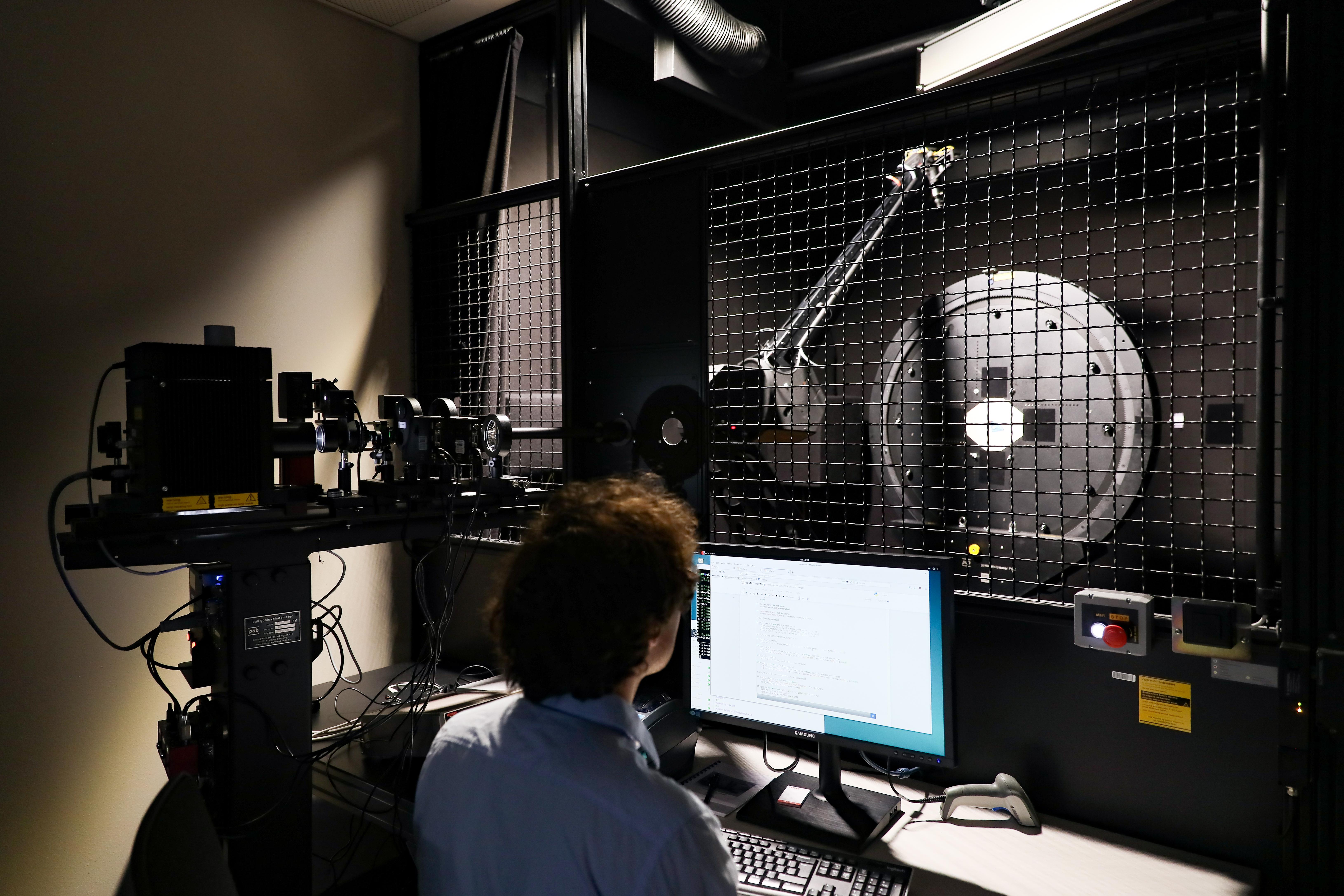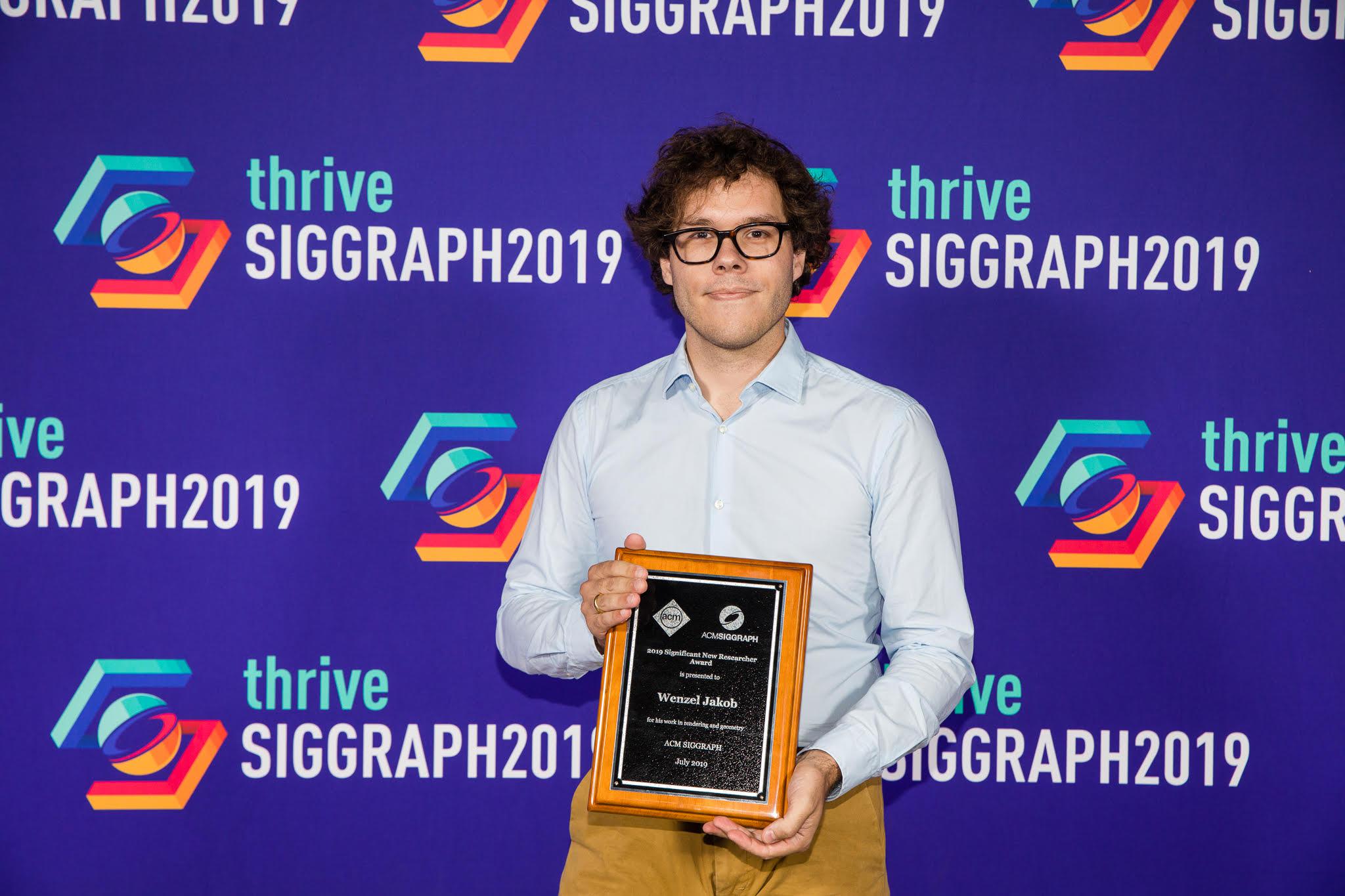Digitizing and replicating the world of materials
A team of EPFL researchers has set itself the lofty goal of building the biggest-ever database that digitizes the visual appearance of all natural and synthetic materials in the world.
Is it possible to digitally replicate the way light shines off silk, the kaleidoscope of colors on butterfly wings, or the structure of fabrics, plastics, and stones? A team of researchers at EPFL’s Realistic Graphics Lab and Unity Technologies in Grenoble, is developing computer models to do just that. Their process begins by meticulously digitizing any material they can lay their hands on, using a sophisticated machine called a gonio-photometer.
Imagine taking a photo of a car on a sunny day: the picture will only capture its appearance for that specific viewpoint and illumination, but it cannot tell us how the same car would look from another viewpoint later in the evening. In contrast to a camera, a gonio-photometer measures the light reflected by a material at different angles, capturing the essence of what gives the car’s painted surface its particular look: shiny, pearlescent, metallic, faded, etc. The resulting data is much richer than a single photograph and can be used to generate photorealistic computer images of objects made from those same materials within arbitrary virtual scenes.

Digitize a butterfly wing © 2019 EPFL Alain Herzog
The team at EPFL, led by Prof. Wenzel Jakob, studies the way in which light interacts with various materials so that this process can be reproduced in a software simulation. “Our goal is to put together a very comprehensive library of materials—not just to recreate them, but also to understand mathematically what makes them look the way that they do,” says Jakob. The researchers intend to digitize samples ranging from a sheet of paper and a piece of plastic from a pen to a butterfly wing and even a piece of fabric from a Darth Vader costume. “This kind of material data is invaluable in areas like architecture, computer vision, or the entertainment industry. We’ve recently started working with Weta Digital and Industrial Light & Magic, who make movies like Avatar and Star Wars,” he adds.
Creating images that look like the real thing

Wenzel Jakob uses a photo-goniometer © 2019 EPFL Alain Herzog
The gonio-photometer is an impressive machine some five meters long. It is operated in a room, whose walls have been covered with black cloth to absorb the light reflected by the sample being analyzed. The sample is placed in the center of the device, where it is observed from the tip of a robotic arm that spins with a speed of up to 3 meters per second so that measurements can be taken rapidly for many configurations. “A conventional camera only records red, green and blue color information that is visible to the human eye. We instead use a spectrometer that records hundreds of wavelengths throughout the entire visual spectrum, extending even to UV and infrared. That wealth of data provides us with much more information about a material that enables us to simulate its appearance extremely precisely,” says Jakob.
The team has developed a new algorithm that takes full control of the gonio-photometer to only capture a small subset of an inconceivably large four-dimensional space, enabling materials to be digitized much more rapidly than was previously possible. Jakob’s group also develops the Mitsuba Renderer, a widely used open source software platform that simulates light computationally to create photorealistic images of virtual worlds. With the acquired data, these simulations can now achieve an unprecedented level of accuracy.
On July 29, Jakob received ACM SIGGRAPH’s Significant New Researcher Award. ACM, the Association For Computing Machinery, announced that Jakob was selected for the prestigious prize in recognition of his theoretical and algorithmic contributions to the field, as well as for his work in developing open source software for research.

Jakob Wenzel received the SIGGRAPH Award 2019 © Dina Douglass
Contacts:
Sandy Evangelista EPFL Press Service
[email protected]
+41 79 502 81 06
Wenzel Jakob Professor of EPFL’s Realistic Graphics Lab
[email protected]
+41 21 693 13 29
+41 21 693 52 15


